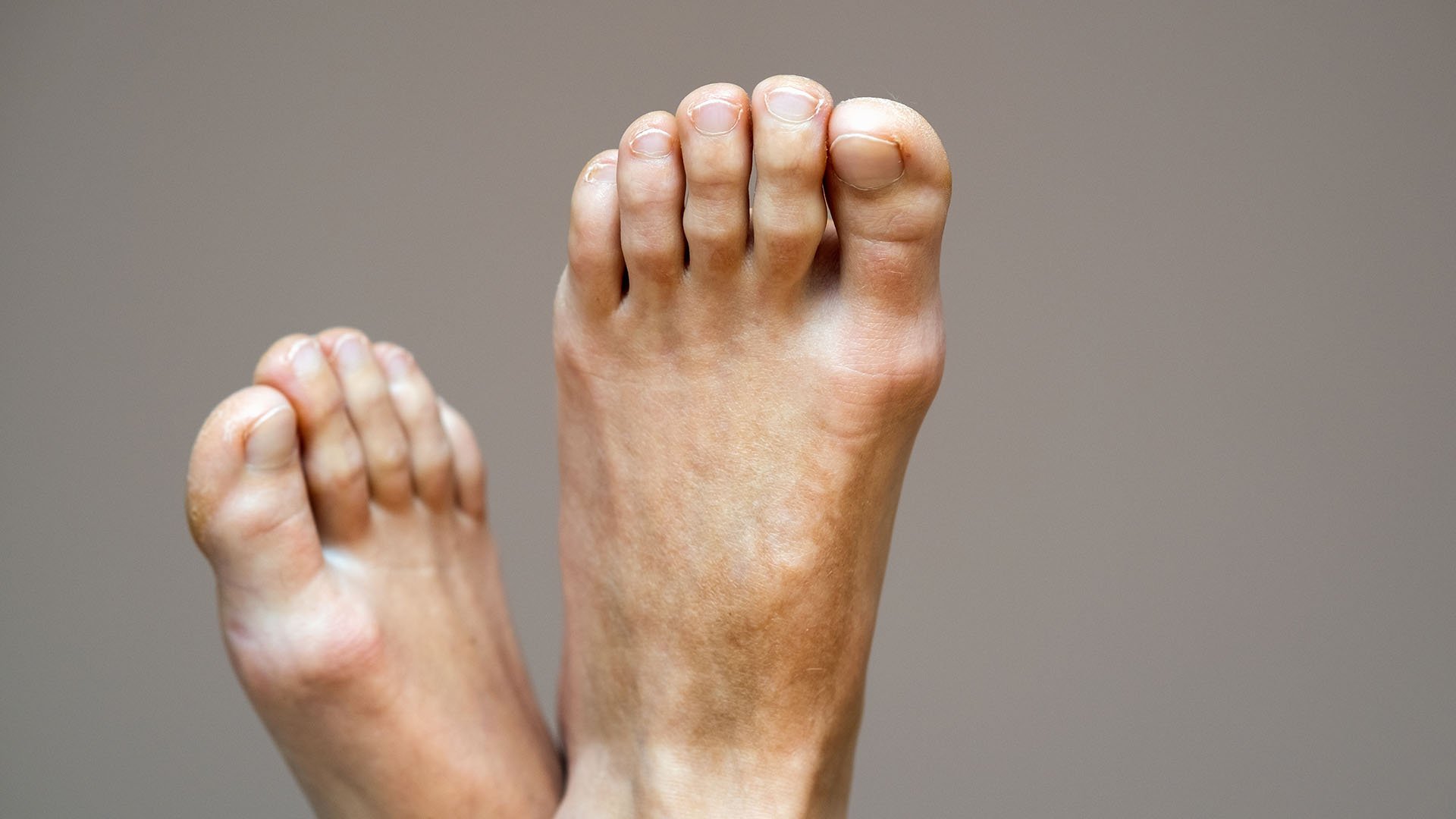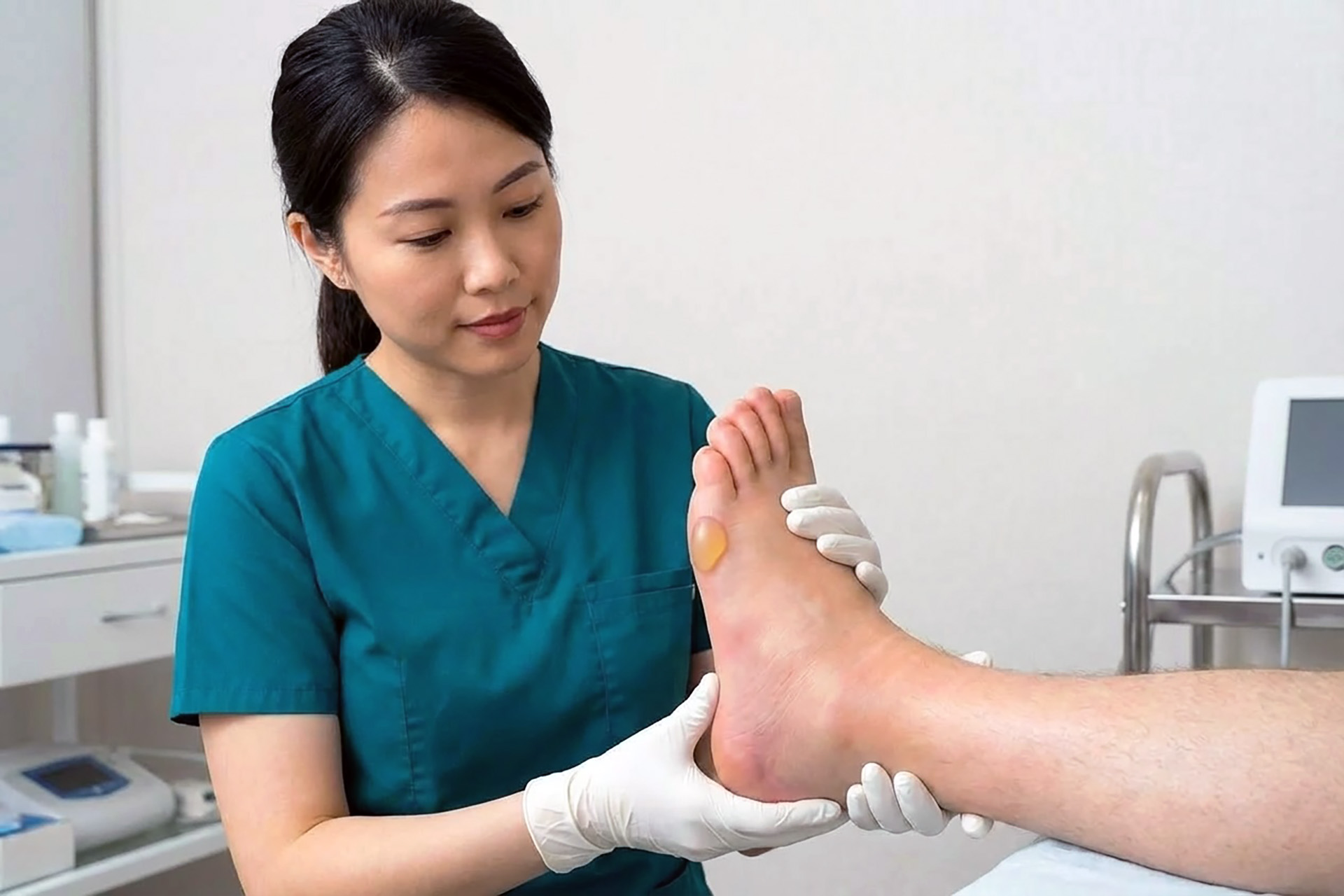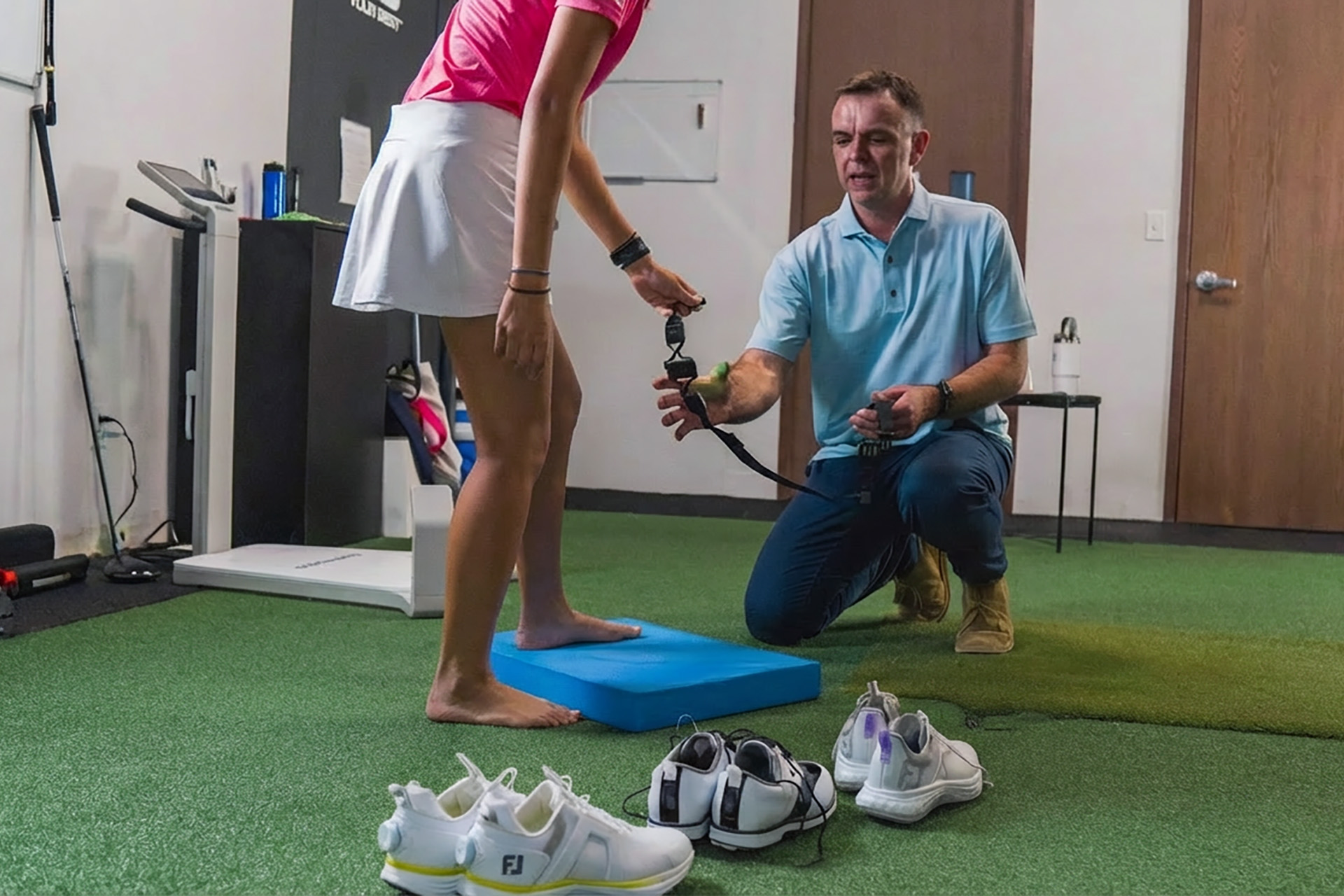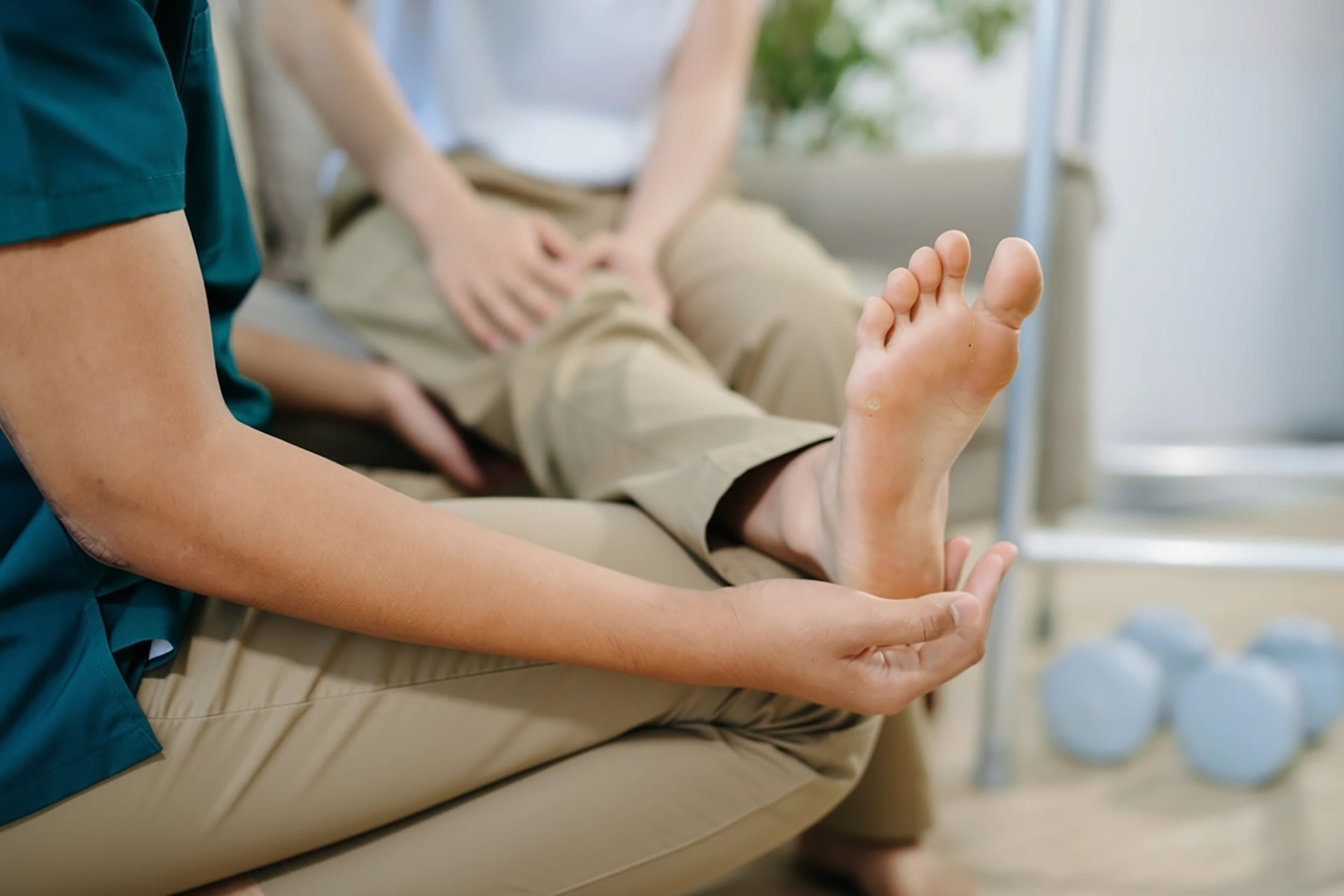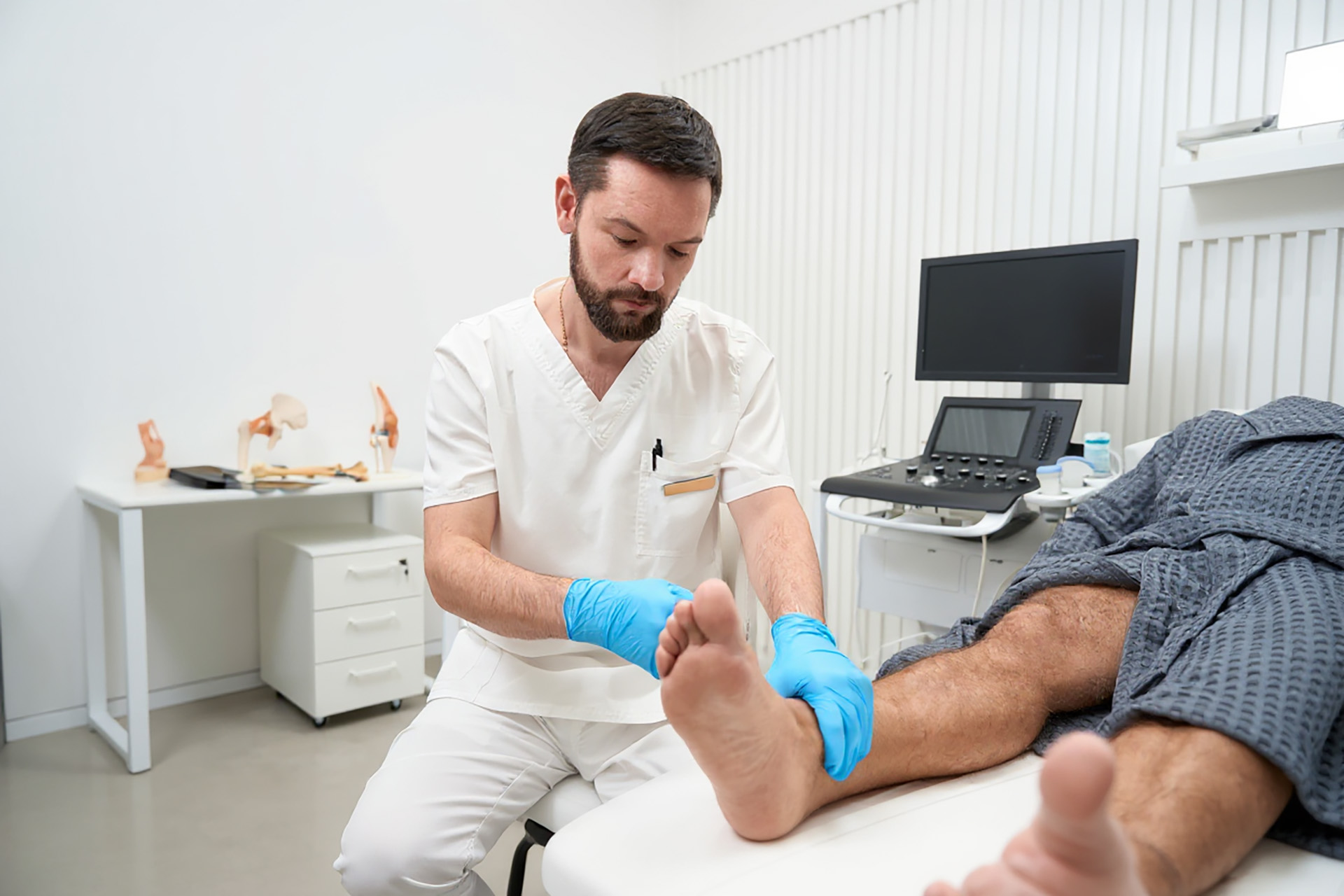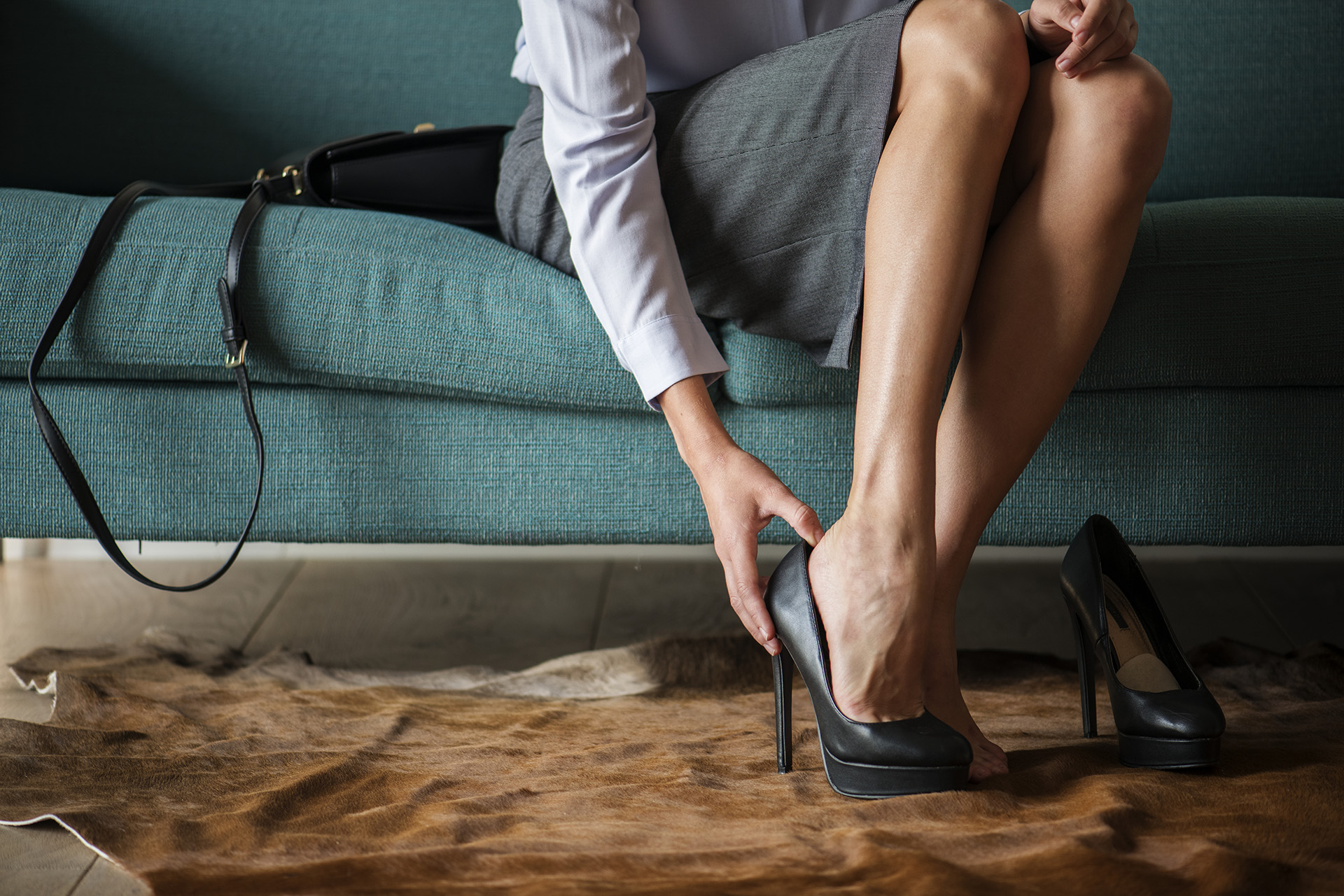Stepping on a corn or the discomfort of thickened callused skin can turn simple daily activities into challenges. If you have a corn or callus on your feet, recognising the symptoms early and seeking professional help is key to preventing further complications. For runners pounding the pavement, athletes pushing their limits, and anyone whose feet are under repetitive pressure, corns and calluses are more than just cosmetic issues – they’re biomechanical red flags that require professional attention.
Understanding what makes effective intervention, not just temporary relief, requires understanding the complex interplay between foot mechanics, pressure distribution and tissue adaptation. Calluses and corns require individualised strategies to get lasting relief and prevent recurrence.
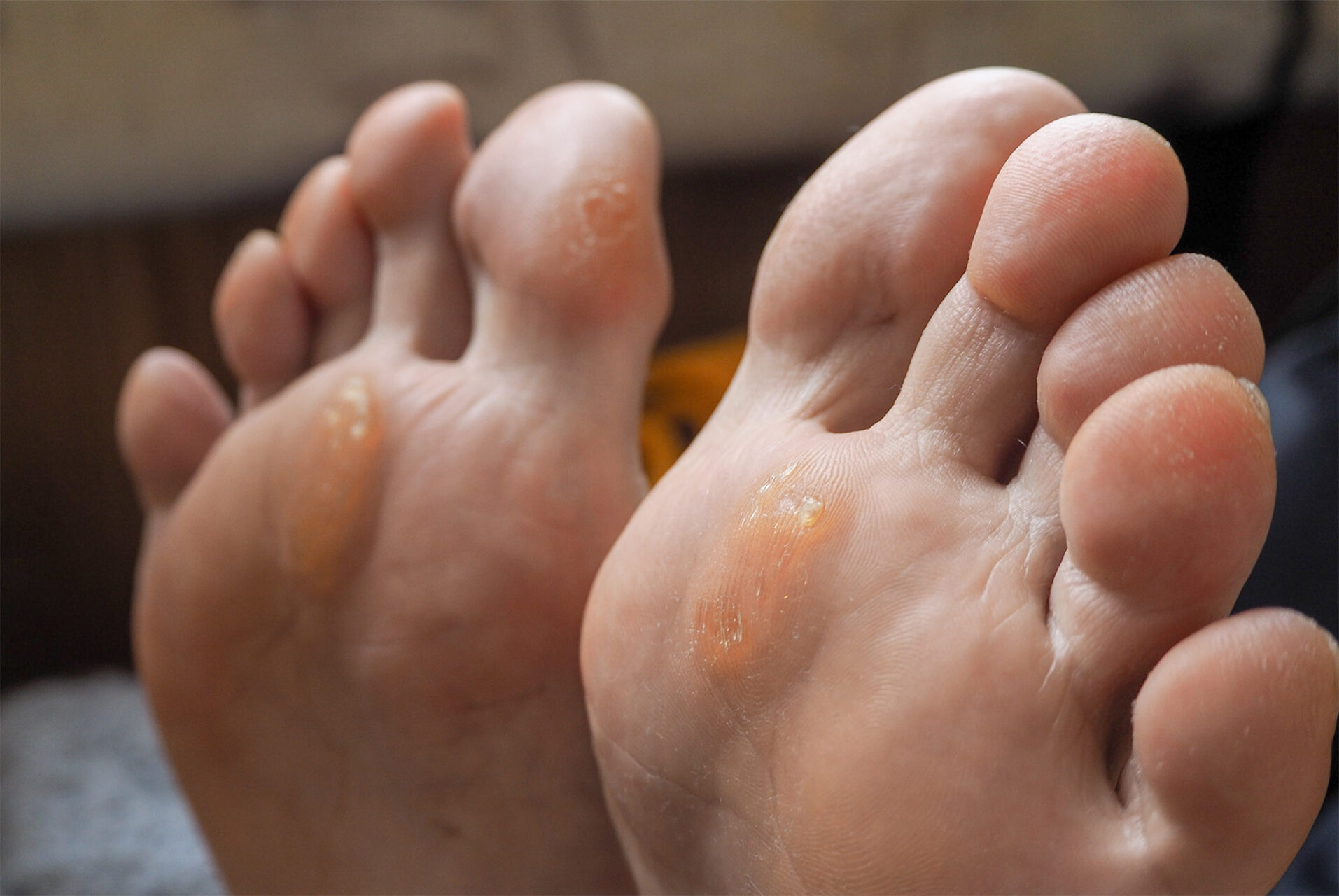
What Is The Difference Between A Corn and A Callus?
Corns and calluses are often mentioned together, but they are two distinct conditions that require different approaches. Calluses develop across an area of skin on weight-bearing areas, such as the heels and the ball of the foot, as a broad, uniform thickening of the skin that responds to pressure or friction. These calluses form in areas of the foot exposed to repeated irritation, and the skin becomes waxy, flaky, or dry. This thickened area of skin that develops is the body’s way of protecting itself from ongoing pressure or friction. Calluses cover a larger skin area than corns and rarely cause pain if undisturbed.
Corns, on the other hand, are smaller, more focused formations with a hard central core surrounded by inflamed tissue. They occur on non-weight-bearing areas, such as the top or side of a toe, between digits, or along the sides of the toes, and deliver sharp, pinpoint pain when compressed. This concentrated pain distinguishes corns from the broader, duller sensation of calluses.
Corns and calluses can also develop on the hands, especially on the palms, in response to repeated pressure or friction.
Once you understand the difference, it’s essential to note that podiatrists are trained to diagnose corns or calluses and can determine the optimal management plan for you. When we conduct Footwear Assessments with patients, we often find that poor shoe selection contributes to both conditions, but in distinct ways. Tight shoes create focused pressure points that lead to corns, and loose shoes create sliding friction that leads to callus formation. Don’t try to remove the corn or callus at home, as this can lead to complications. Seek professional help if the corn or callus becomes painful or infected, or if you have underlying health conditions.
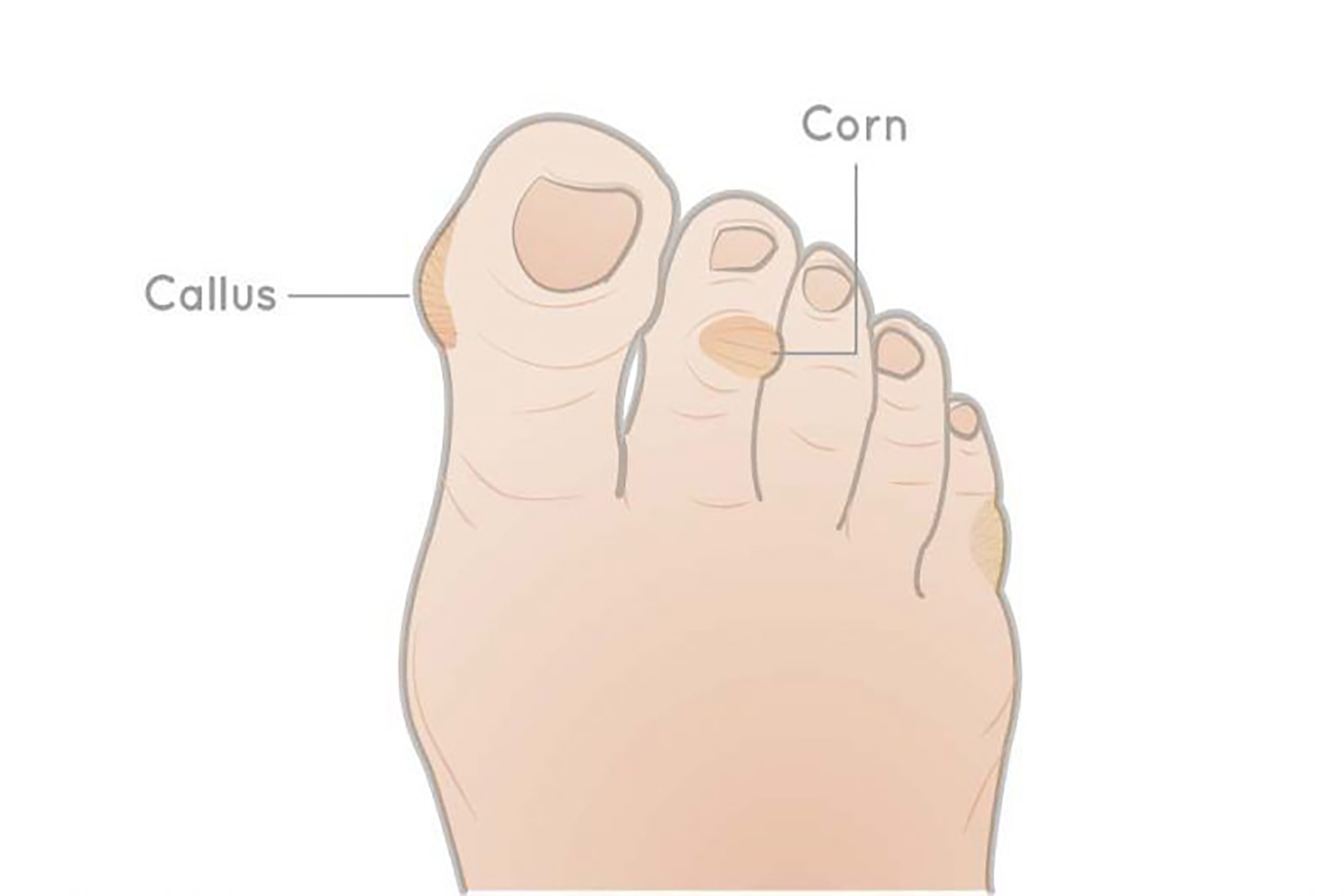
What Causes Corns and Calluses?
Corns and calluses on the feet develop from mechanical stress patterns that exceed the skin’s adaptive capacity. Repetitive friction and pressure trigger hyperkeratinisation, the skin’s protective thickening response. When this protective mechanism becomes excessive, it becomes a problem.
Ill-fitting footwear is the main culprit, with high heels concentrating pressure onto the forefoot, creating the perfect conditions for corns to develop. Shoes without proper arch support or worn without socks create the sliding friction that leads to callus formation. Even minor factors, such as prominent sock seams or sandal straps, can trigger these conditions in susceptible individuals. Some people use over-the-counter salicylic acid treatments to treat corns and calluses, but these should be used cautiously as they can cause irritation or infection. Professional removal is often safer and more effective.
Structural foot abnormalities significantly influence susceptibility. Bunions, hammertoes and bone spurs create altered pressure patterns that the RehaWalk® pressure sensor treadmill gait analysis can measure precisely. This advanced technology reveals pressure distribution patterns across areas of the foot that are invisible to the naked eye, allowing us to see precisely how biomechanical irregularities contribute to tissue thickening.
Athletes have particular challenges as training volumes amplify everyday mechanical stresses. Runners developing foot calluses and corn formations often exhibit subtle gait compensations or equipment issues that only become apparent through comprehensive analysis, which combines visual assessment with pressure mapping technology.
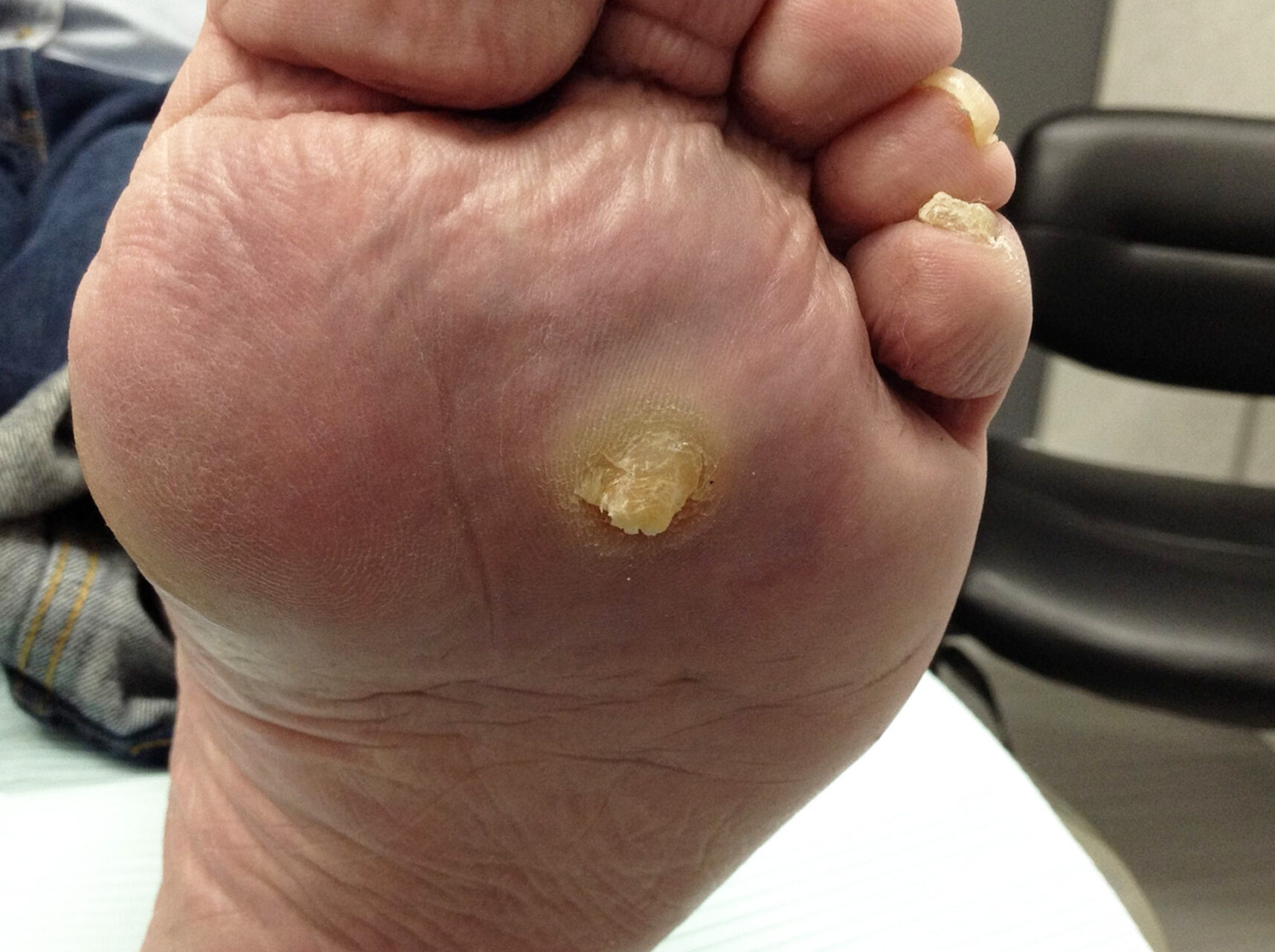
What Are the Symptoms of Corns and Calluses?
Corns and calluses are among the most common foot problems that develop in response to repeated friction or pressure. You may notice areas of thickened skin on your feet, especially the toes or soles, that feel rough or hard to the touch. Corns are small, round, raised bumps with a hard centre, and calluses are broader, flatter patches of thickened skin. Recognising the symptoms early can make a big difference in comfort and treatment.
Pain or tenderness is a key symptom, especially when pressure is applied to the affected area, like when walking or wearing shoes. The skin may also be dry, flaky or waxy. If you have diabetes or any condition that affects blood flow to your feet, monitoring for these symptoms is especially important, as corns and calluses can lead to more serious complications. In such cases, see a podiatrist promptly for proper assessment and management.
To ease discomfort at home, soak your feet in warm water to soften the thickened skin and gently use a pumice stone to reduce the buildup. If you notice persistent pain, redness, swelling, signs of infection, or diabetes, seek professional care to prevent further issues.
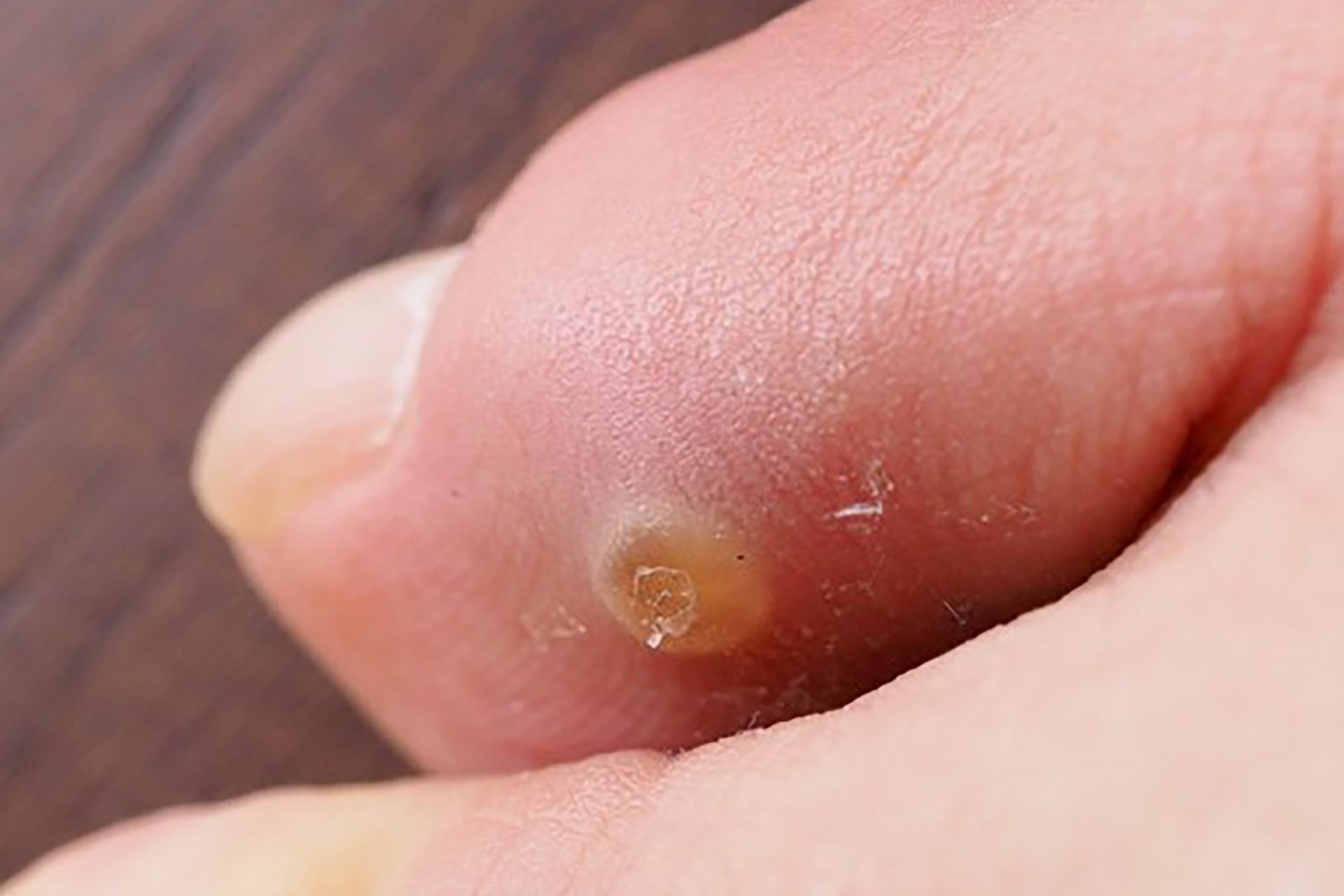
Advanced Diagnostic Approaches
Podiatric diagnosis goes beyond visual inspection of thickened skin. While corns and calluses are relatively easy to identify, understanding their causative mechanisms requires advanced assessment techniques that inform care strategies.
Our approach combines traditional clinical examination with cutting-edge technology. The RehaWalk® system provides detailed pressure mapping during various walking speeds and conditions, showing how weight distribution abnormalities contribute to specific corn and callus patterns. This information is invaluable when designing Custom Orthoses, as it allows precise targeting of pressure relief and redistribution.
Restricted joint mobility in the feet or ankles often creates compensatory movement patterns that increase localised pressure. By evaluating the range of motion throughout the kinetic chain, we can identify mobility restrictions that contribute to abnormal loading patterns. Diagnosis is more complex and critical for patients with diabetes or circulation concerns. These conditions reduce sensation and healing capacity, making professional evaluation essential rather than optional.
Pressure mapping reveals subtle gait abnormalities that contribute to corn and callus formation. A slight overpronation tendency might increase pressure on the medial forefoot while supination increases lateral loading. These patterns, which are invisible during static examination, become apparent through dynamic analysis. Combining multiple assessment techniques provides a comprehensive picture of each patient’s biomechanical profile. Footwear Assessment looks at external factors, while mobilisation evaluates internal restrictions. With pressure analysis, this multi-faceted approach allows for truly individualised care..
Poor circulation, often due to compromised blood vessels, can mask the pain signals that would normally prompt treatment seeking and allow corns and calluses to progress to more serious complications. The health of the blood vessels is, therefore, a key factor in foot assessments as they can constrict or dilate and affect tissue health and the body’s ability to heal or respond to pressure-related injuries.
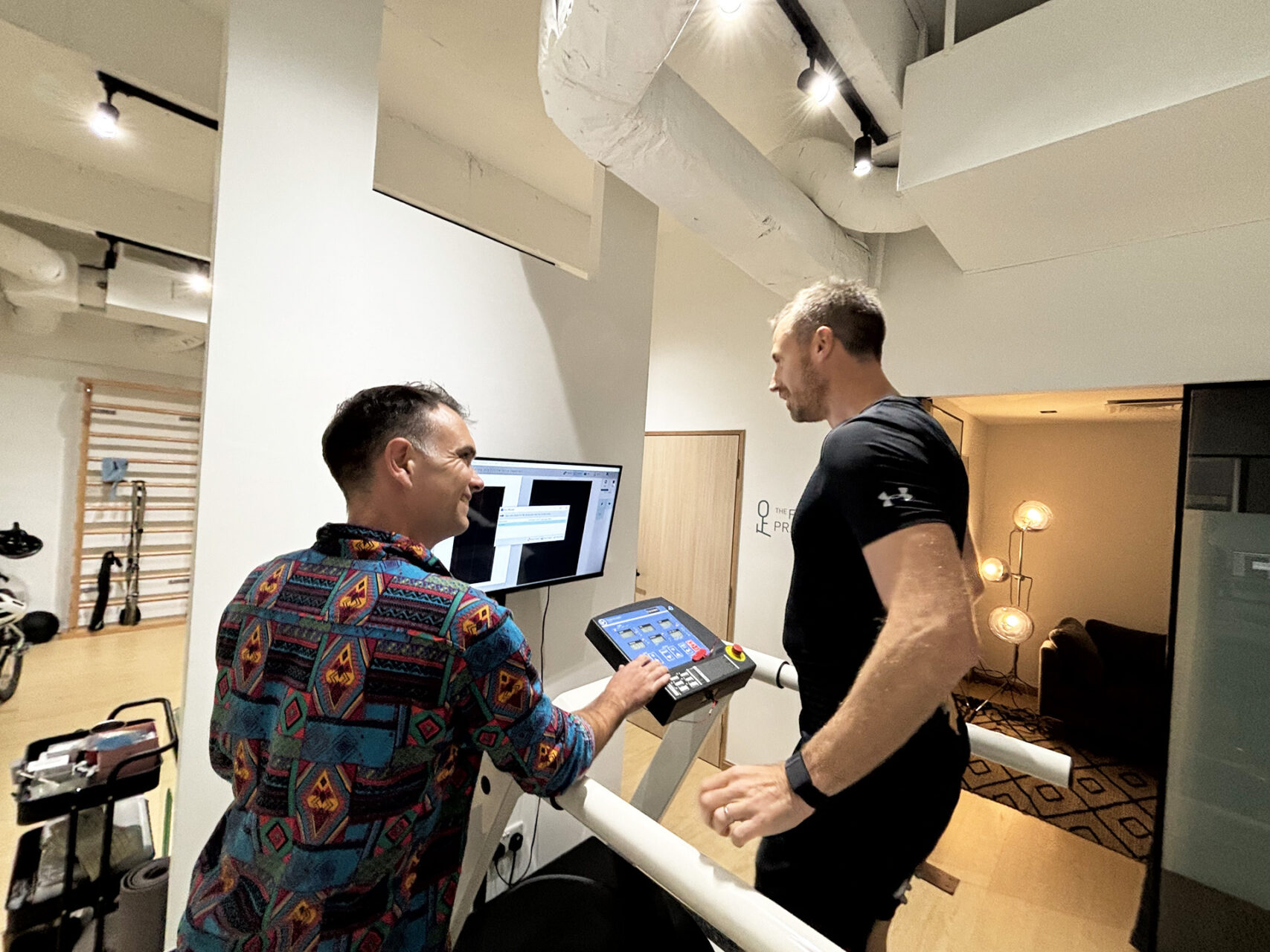
Comprehensive Management of Corns & Calluses
Effective corn and callus removal in Singapore requires addressing both immediate symptoms and underlying causes. Surface treatment alone, whether over-the-counter corn and callus remover products or basic debridement, provides only temporary relief if biomechanical issues are not addressed.
The Foot Practice’s approach starts with careful debridement using sterile instruments to remove the thickened tissue layers. This process requires skill and experience and is very different from aggressive home treatment attempts that can worsen the condition. Professional removal creates smooth, healthy tissue while preserving essential protective skin layers.
However, true success lies in preventing recurrence through biomechanical correction. Custom orthoses play a crucial role in redistributing pressure away from vulnerable areas while maintaining proper foot alignment. These devices, crafted from detailed impressions and pressure analysis data, address the specific mechanical factors contributing to each patient’s condition.
Mobilisation exercises complement orthotic intervention by restoring optimal joint function throughout the foot and ankle complex. Restricted mobility in seemingly unrelated joints can create compensatory patterns that increase pressure on corn- and callus-prone areas. Through targeted stretching and strengthening protocols, we restore balanced movement patterns that reduce mechanical stress.

Specialised Interventions and Advanced Care
Some corn and callus cases require interventions beyond standard protocols. Chronic formations with significant tissue buildup may benefit from serial debridement sessions combined with controlled keratolytic agents. These interventions, applied under professional supervision, gradually reduce tissue thickness while minimising discomfort and injury risk.
Surgical consultation may be necessary for patients with structural abnormalities contributing to recurrent problems. Procedures that address underlying bone spurs, bunions, or digital deformities can eliminate the mechanical factors that cause repeated corn and callus formation. However, surgery is a last resort and is only considered when non-surgical measures have failed.
Antibiotic therapy is relevant when corns develop complications such as ulceration or infection. These situations are more common in diabetic patients or those with poor circulation and require immediate professional attention to prevent serious consequences.
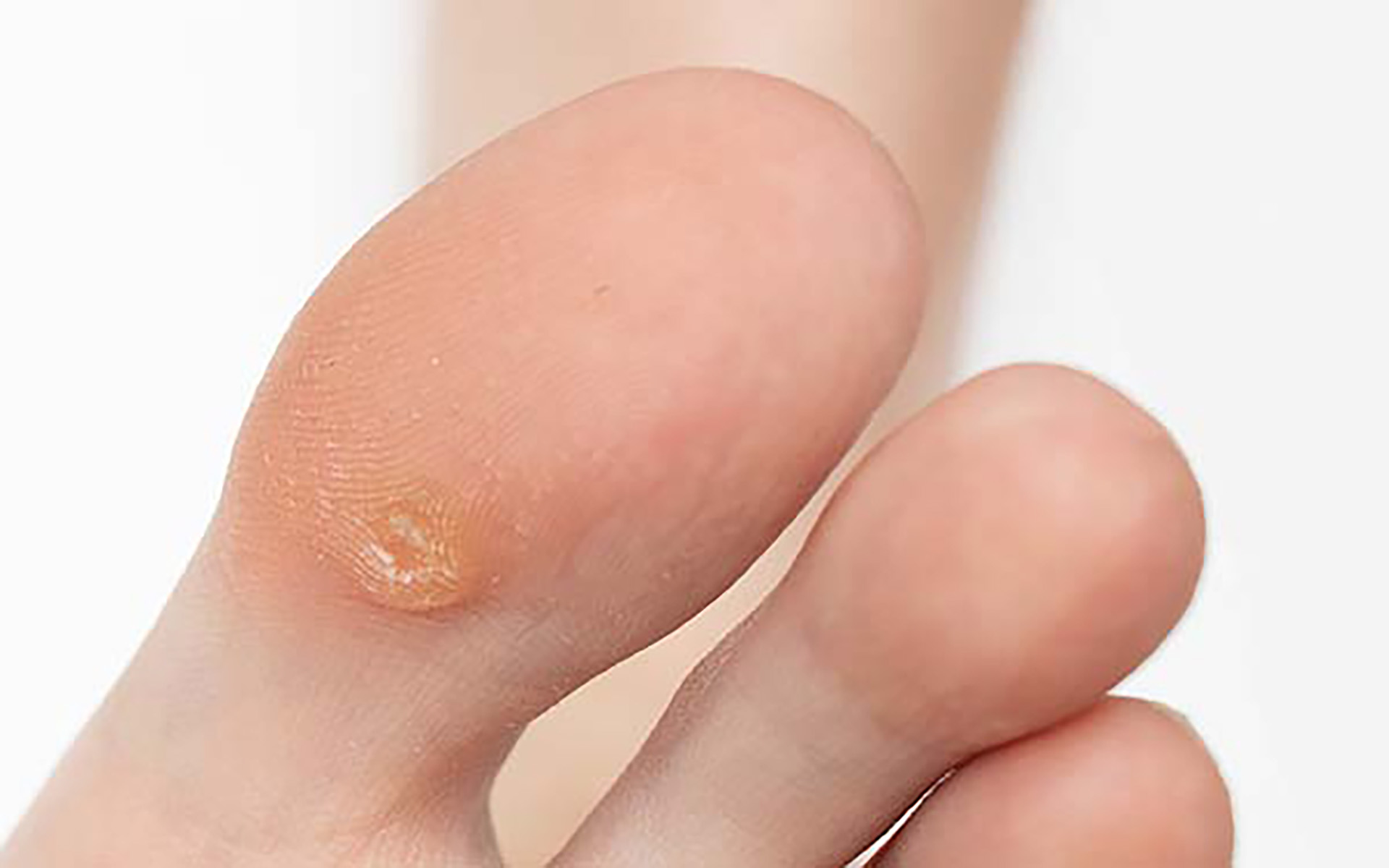
When Professional Care is Necessary
While mild calluses may respond to careful home management, several situations require professional attention. Diabetic patients should never self-treat due to the risks of infection and healing complications. Similarly, patients with poor circulation require professional monitoring to prevent minor issues from developing into serious complications.
Pain, inflammation or signs of infection around corns and calluses indicate that immediate professional consultation is needed. These symptoms mean complications that home treatment can’t address safely or effectively.
Athletes experiencing performance impacts from foot discomfort benefit from professional assessment even when symptoms seem minor. Early intervention prevents compensatory movement patterns that can create additional problems throughout the kinetic chain.
If corns and calluses bother you and affect your comfort, performance, or quality of life, professional podiatric care has solutions that address the symptoms and the underlying causes. The Foot Practice uses advanced technology and proven management for long-term relief from corns and calluses. Contact us today to book your appointment and learn how our team of experts can transform your foot health with individualised, evidence-based care.

